[Death-camas East of the Cascade Mountains of Oregon and Washington]
Common Death Camas, Deadly Zigadenus, Meadow Death Camas
Toxicoscordion venenosum
Synonyms: Toxicoscordion gramineum, Zigadenus gramineus, Zigadenus intermedius, Zigadenus venenosus, Zigadenus venenosus var. gramineus, Zigadenus venenosus var. venenosus
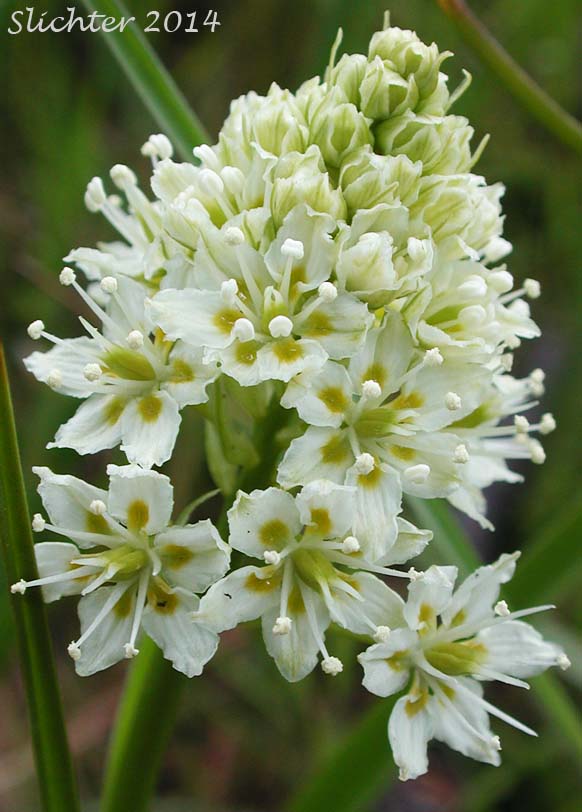 -
- 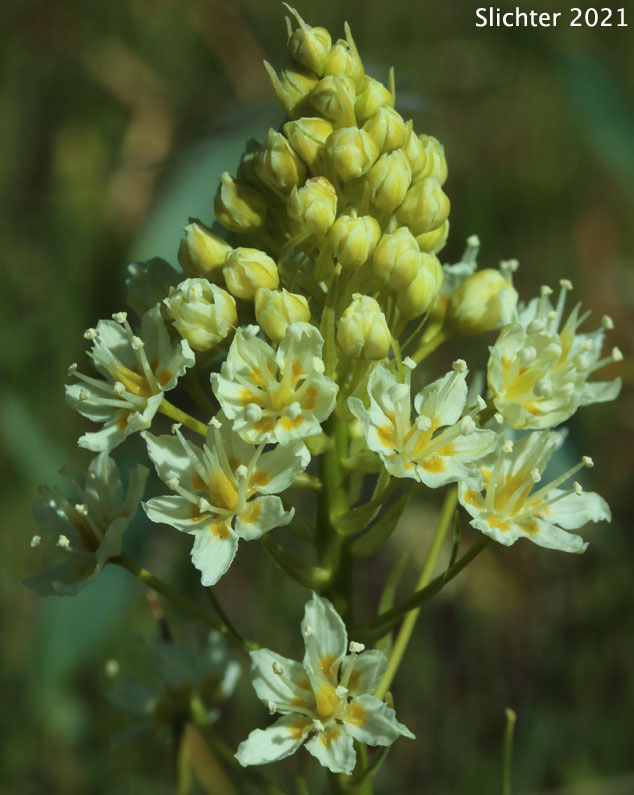
The photo at left shows a close-up of the racemous inflorescence of meadow death-camasas seen in vernally moist, rocky meadows
at Brooks Memorial State Park near Satus Pass, Washington..........May 11, 2011.
The photo at right shows the inflorescence of meadow deth-camas as seen several miles up a jeep road north of Box Canyon Road, Simcoe Mountains Unit of the Klickitat Wildlife Area......My 10, 2021.
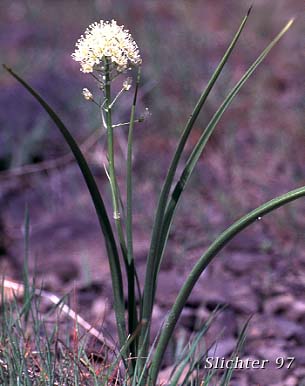 Photo at right of Zigadenus venenosus
var. venenosus at Catherine Creek, Columbia River Gorge.....4/27/97.
Photo at right of Zigadenus venenosus
var. venenosus at Catherine Creek, Columbia River Gorge.....4/27/97.
Characteristics:
Meadow death camas is a beautiful but deadly lily. It consists
of a single stem arising to 50 cm from a ovoid bulb (2-3 cm long). The leaves
are basal, linear in shape with parallel venation, and may range in length from
10 to 40 cm long. The leaves are keeled, and may be somewhat V-shaped in cross-section,
especially near the base.
The inflorescence is a primarily a short raceme, rarely longer
than 15 to 20 cm. The pedicels are strongly ascending. The flowers consist of
six unequal tepals, all of which are separate. These are no longer than 5 mm
long and ovate in shape with a thick, green, ovate gland.
To identify this plant from the similar Zigadenus
paniculatus, meadow death camas has the shorter inflorescence, and where
the inflorescence may be of similar length, meadow death camas has single flowers
arising from the stem (see photos), while panicled death camas has clusters
of flowers arising from the stem, especially in its lower inflorescence.
As mentioned above, this plant is deadly to ingest. It is sometimes
found interspersed with the edible camas, and native tribes often removed it
from the camas beds while both were in bloom, as the bulbs of both are similar.
Habitat:
A widespread species, meadow death-camas may be found on coastal
"prairies" and on the grassy bluffs above the sea to the more arid prairie hillsides,
sagebrush slopes and into montane forest openings.
Range:
Meadow death-camas is found from southern British Columbia to
Alberta and southwestern Saskatchewan in the north, south along both sides of
the Cascades to Baja California, and east to the Great Plains of North and South
Dakota, Nebraska, and Colorado.
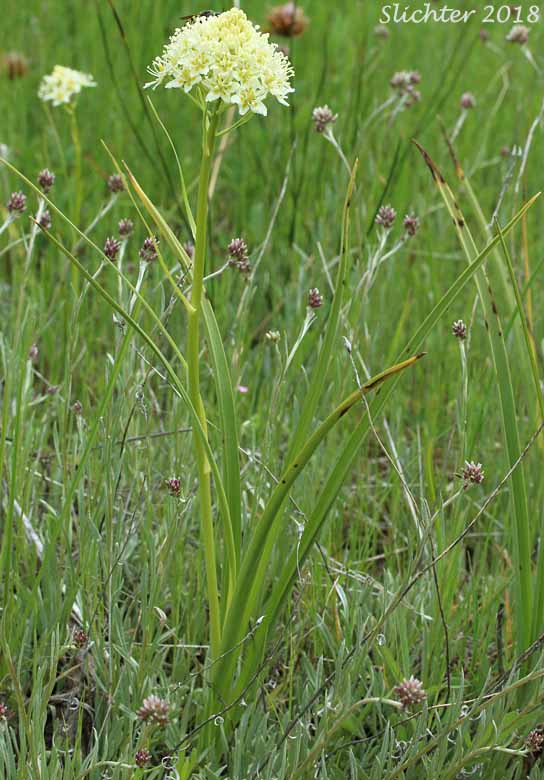 -
- 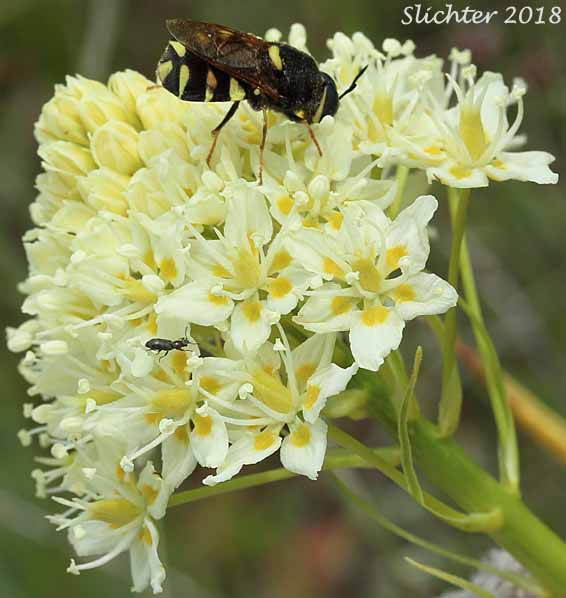
Meadow death-camas observed in moist meadows along Forest Road 30 near the old Cold Springs Guard Station, southeastern corner of Big Summit Prairie, Ochoco National Forest........June 3, 2018.
- 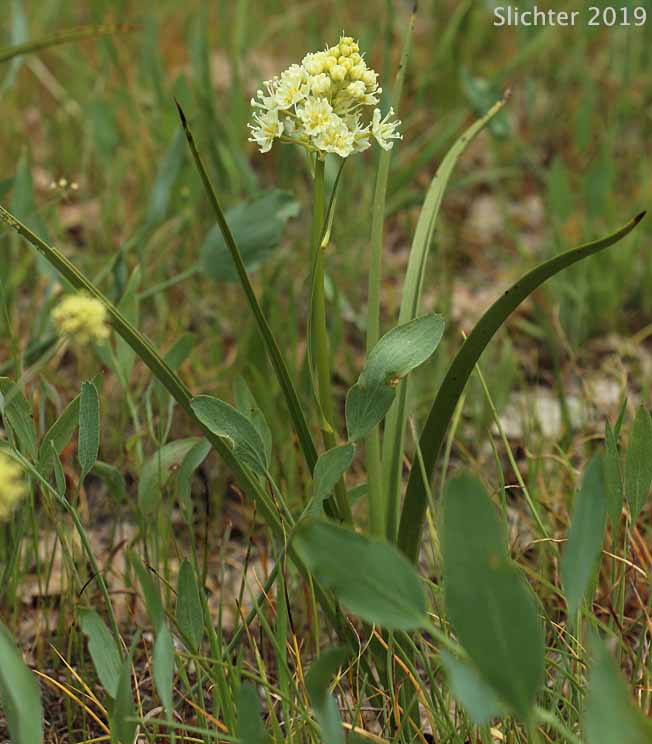 -
-  -
- 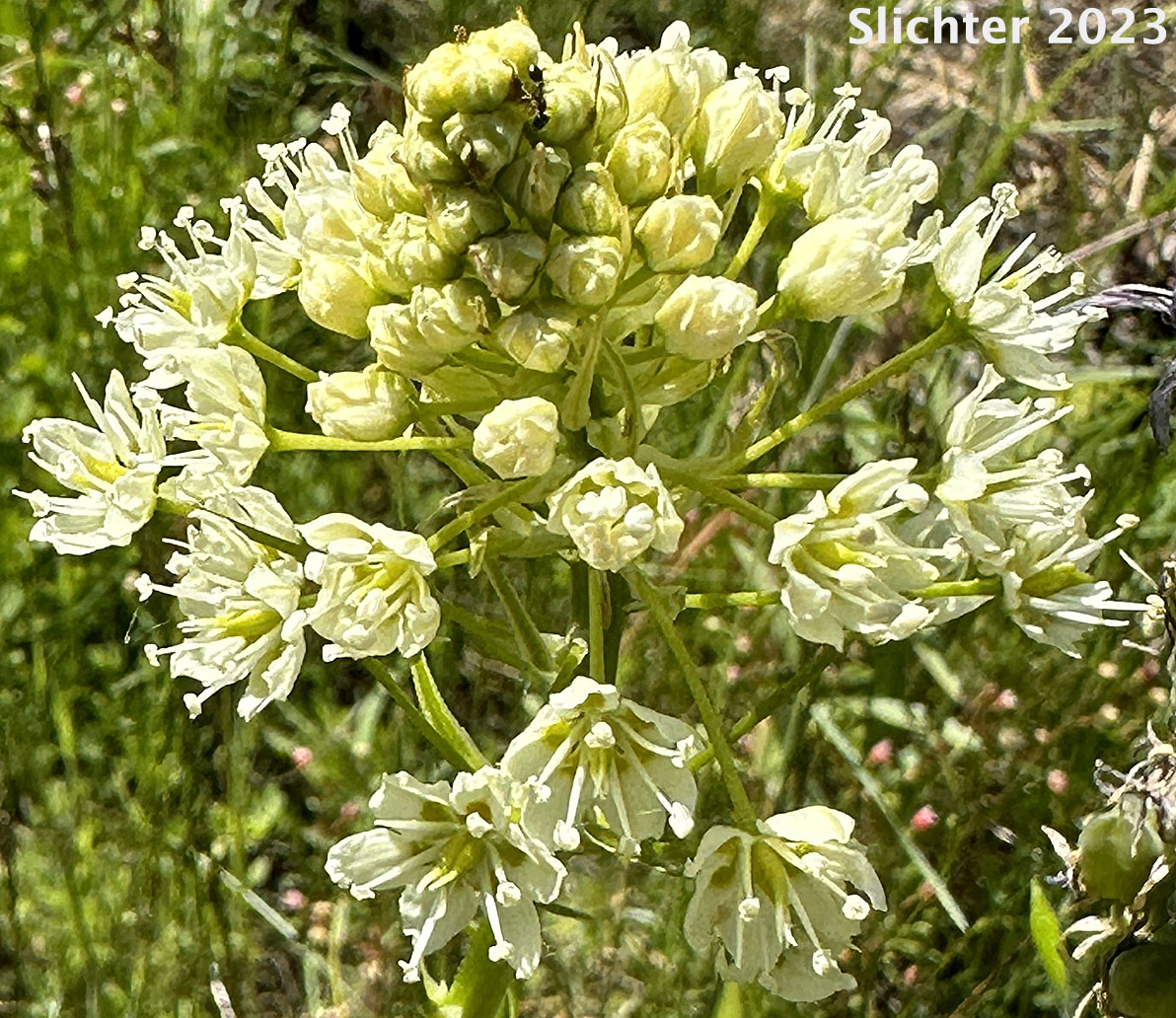
Meadow death-camas blooming at right on vernally moist balds at Brooks Memorial State Park off US 97 near Satus Pass.......May 13, 2019.
The photo at center shows meadow death-camas blooming in vernally moist meadows about one mile north of Tumwater Butte, Simcoe Mountains Unit of the Klickitat Wildlife Area.......May 22, 2022. The photo at right shows the inflorescence of meadow death-camas beginning to bloom in riparian meadows along Dry Creek about one-half mile upstream from Wenas Creek, Yakima County, WA......June 3, 2023.

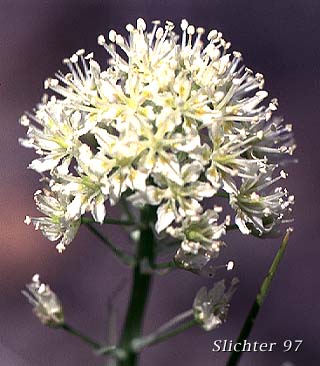 -
- 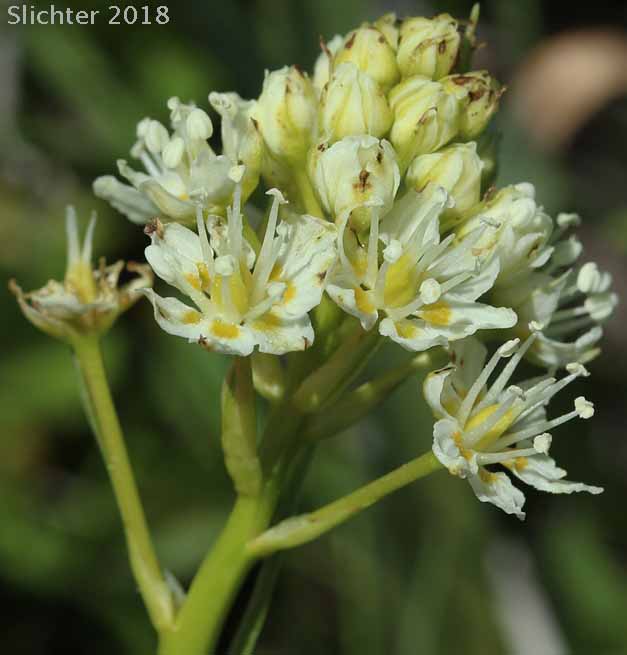
The photo at left shows a close-up of the racemous inflorescence of Meadow Death-camas
at Catherine Creek, Columbia River Gorge..........April 27, 1997. The photo at right shows a close-up of the inflorescence of meadow death-camas as seen in wet meadows along Forest Road #30 just southwest of the old Cold Springs Guard Station......May 27, 2018.
Paul Slichter
 Photo at right of Zigadenus venenosus
var. venenosus at Catherine Creek, Columbia River Gorge.....4/27/97.
Photo at right of Zigadenus venenosus
var. venenosus at Catherine Creek, Columbia River Gorge.....4/27/97.